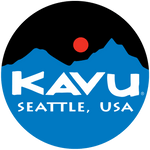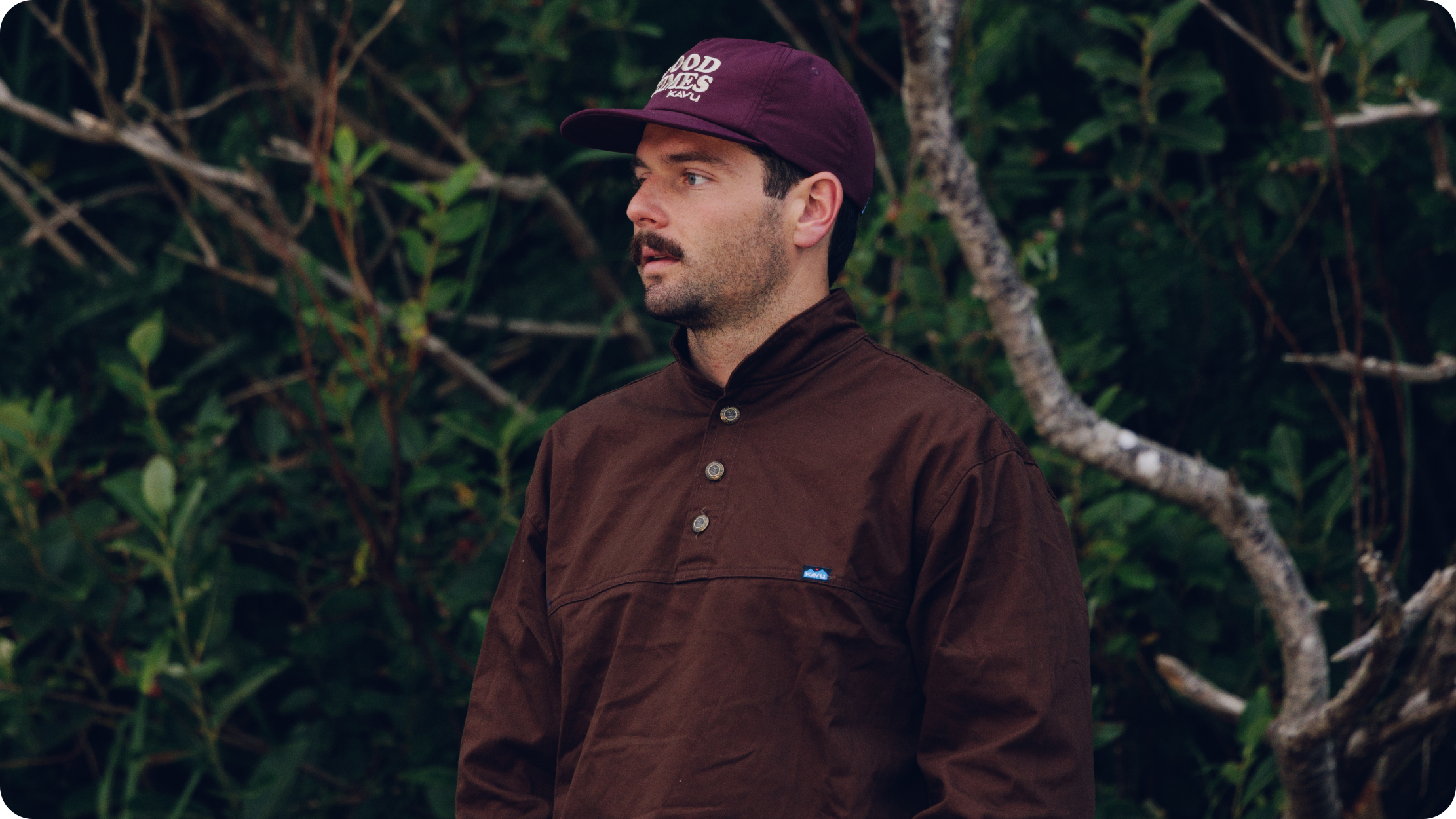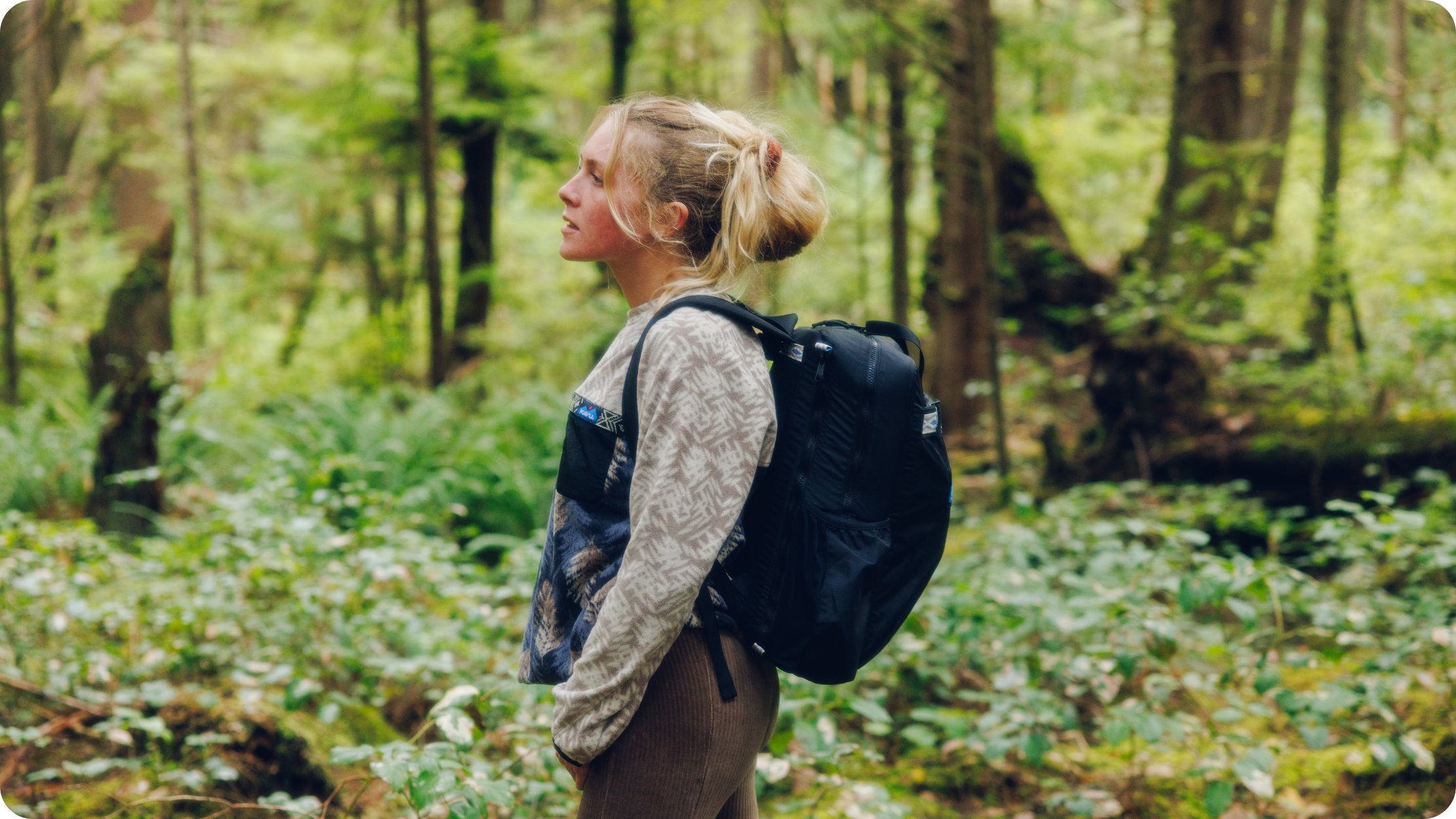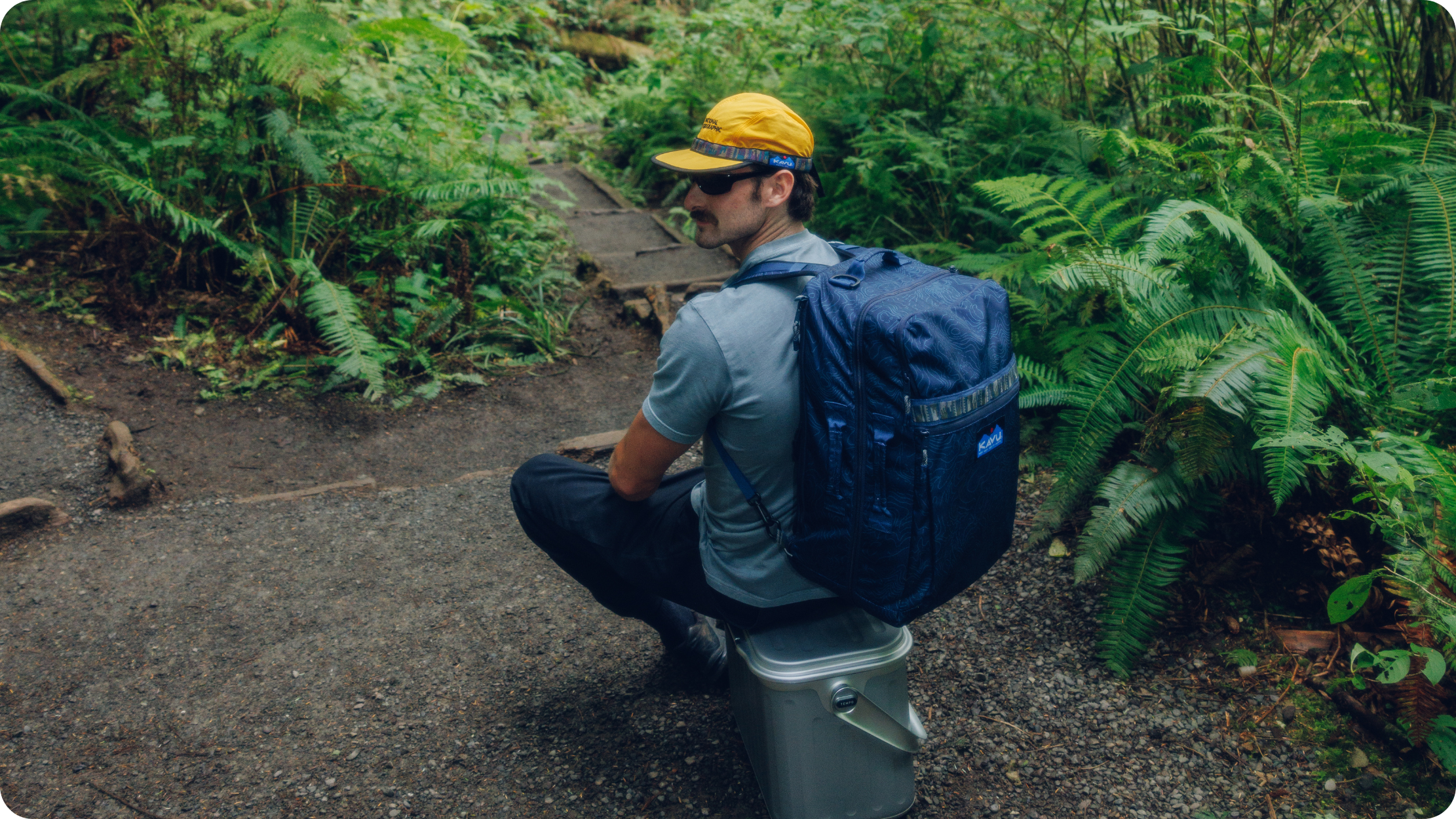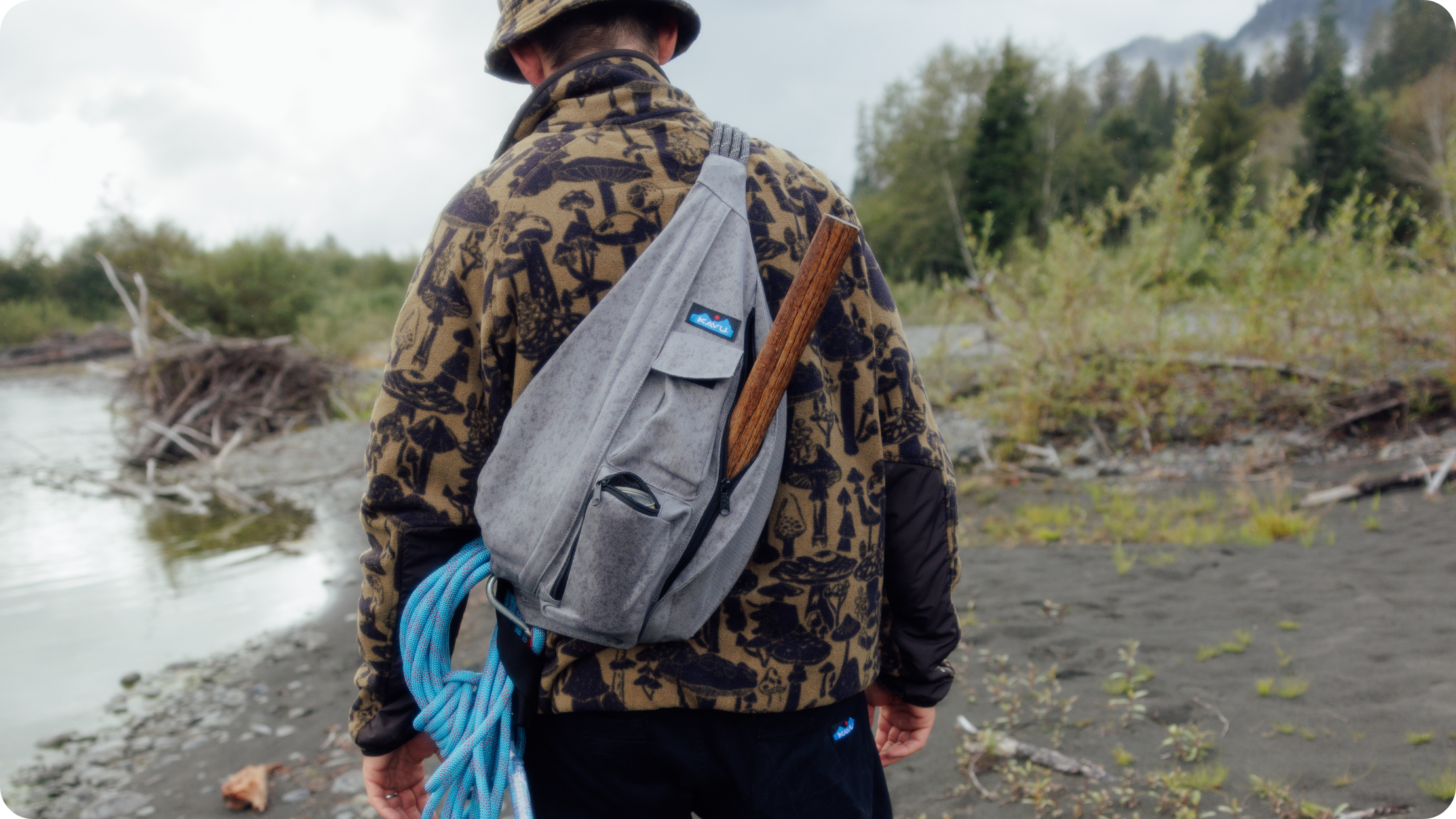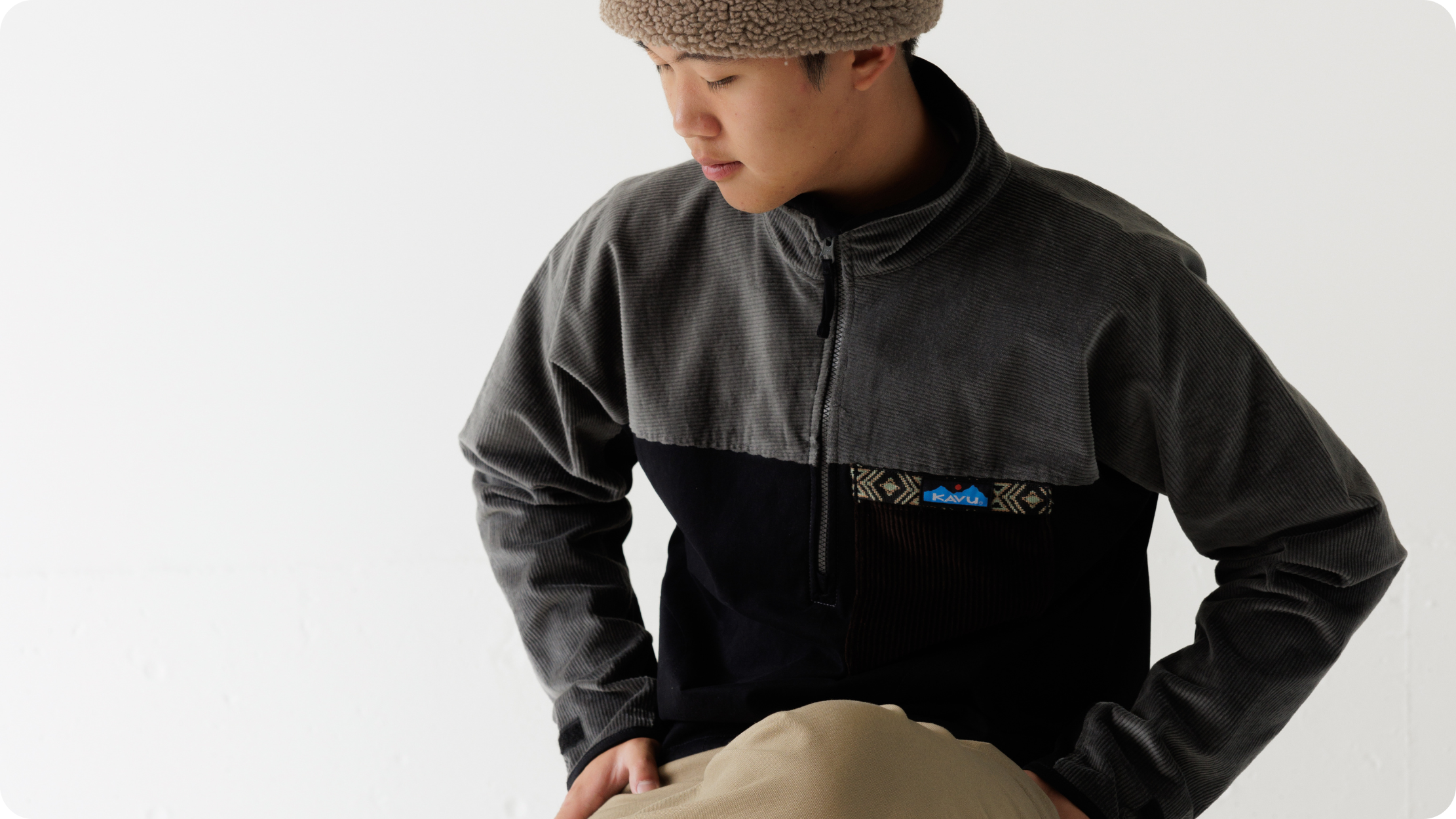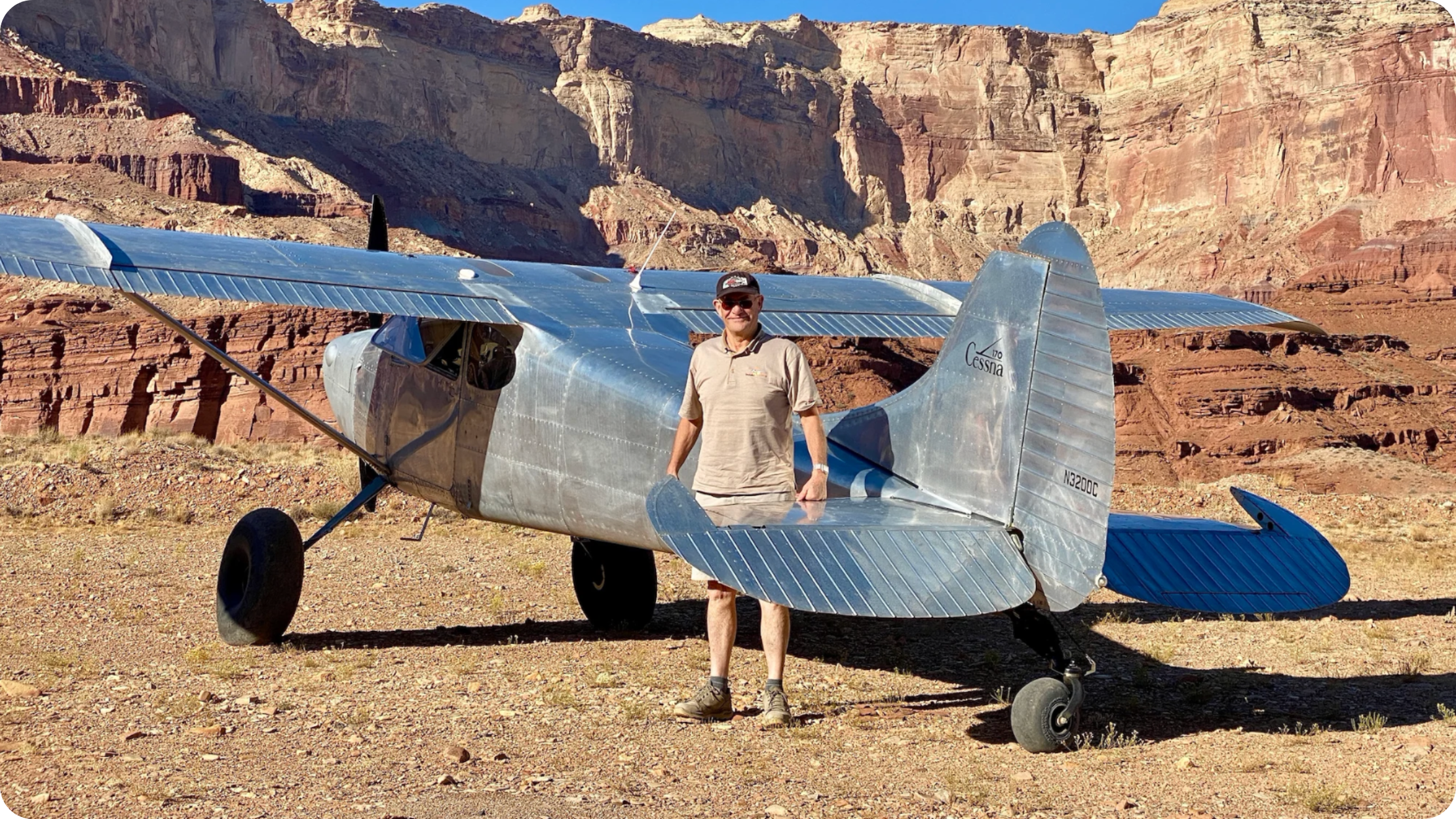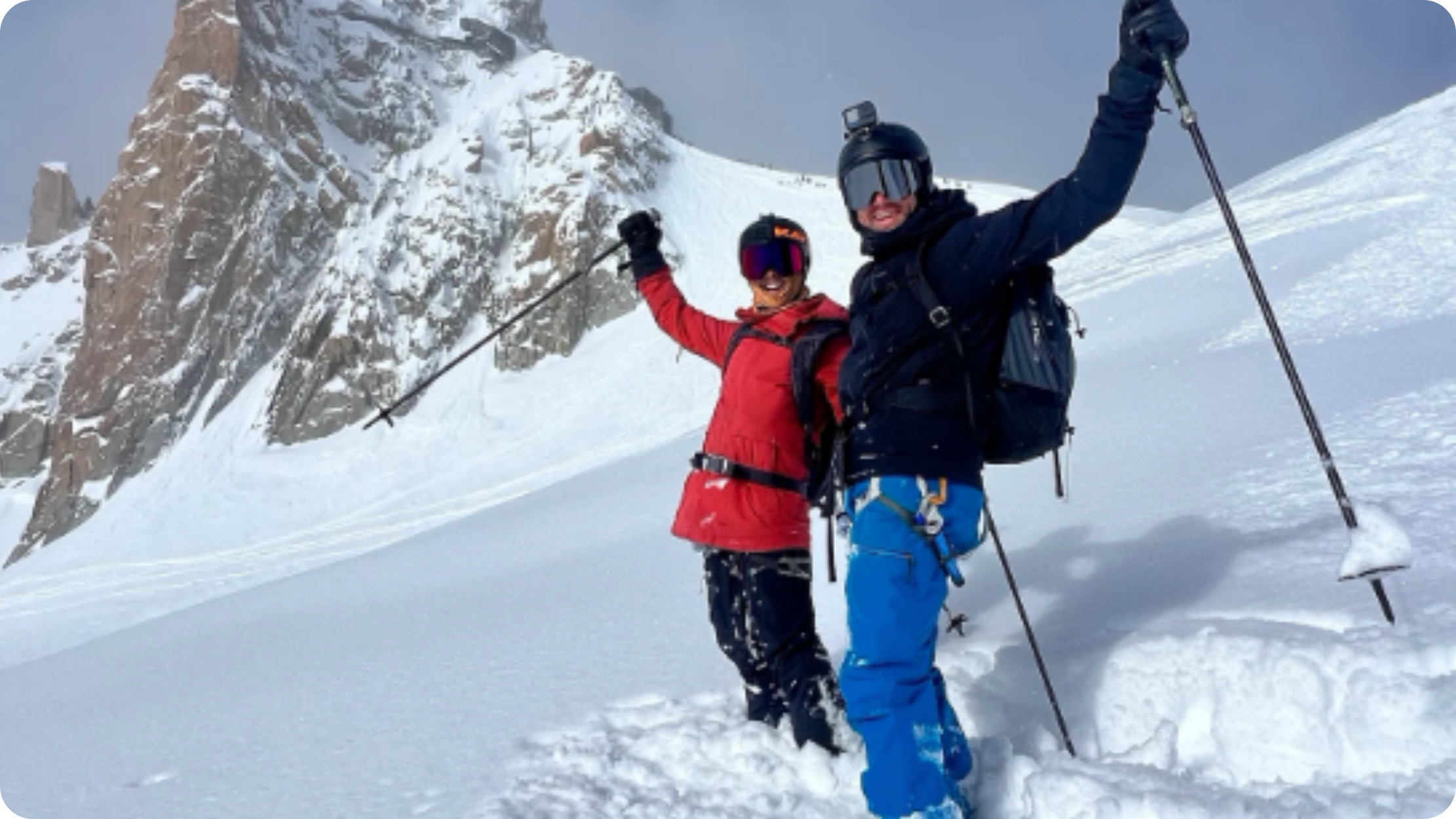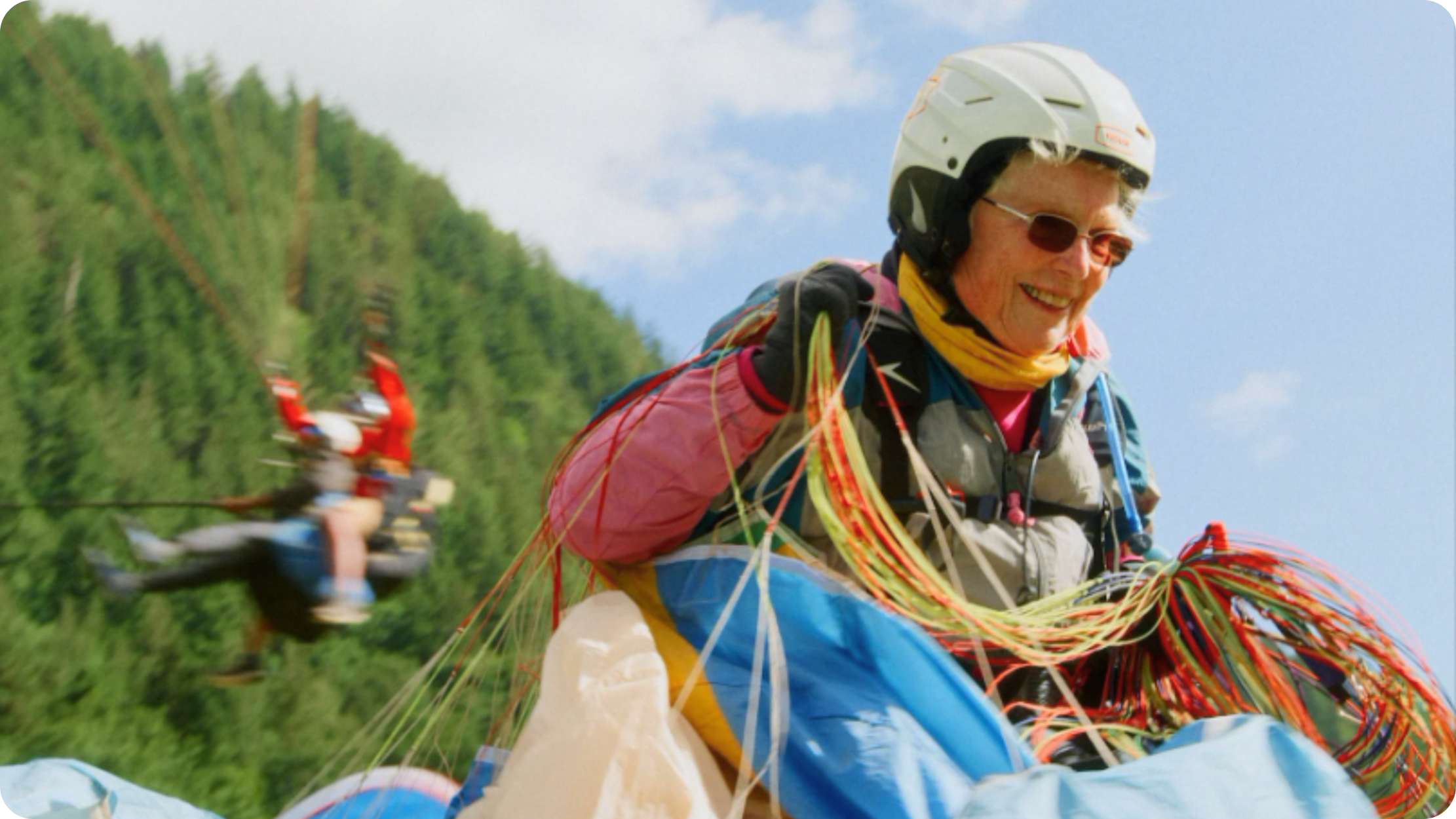
KAVU started life on a fishing boat on the Bering Sea.
The story goes that whilst working as a commercial fisherman in the late ‘80s, Barry Barr was tired of mourning the loss of baseball caps to the choppy waters below, and set about finding a solution to his loose-hatted woes.
After a bit of trial, error and general jiggery-pokery, he found the answer—a peaked canvas cap held firmly in place via a cunning bit of nylon webbing—the Strapcap.
In 1993 Barry turned his headwear brainwave into a fully-fledged brand, KAVU—and more idiosyncratic, functional clothing soon followed. 30 years later, Barry is still captain of the good ship KAVU, making everyday outdoor gear with a unique approach that can’t be replicated.
In this interview (originally published on the Outsiders Store site) he talks about about fishing, the early days of the brand and the all-encompassing philosophy behind it all...
Starting right back at the beginning, you grew up just outside Seattle on an island didn’t you? What was that like?
I grew up on San Juan island, just north of Seattle—it’s about an hour-and-a-half drive away and you’ve got to take a ferry. There are 100 plus islands up there, and the ferry goes to four of them. You’re living off the land, if you want. You could walk down to the beach and have oysters for dinner, or go dig for clams, or go fishing for salmon before school.
It was a small town—in high school there were like 50 kids a grade—you knew everyone. Everyone could play sports, because the teams needed everybody, so you didn’t have to be the biggest jock to be successful. And there was the appreciation of the outdoors. My dad chose to move up there instead of the city for the life experience.
So all this ‘outdoor stuff’ was just an everyday thing up there?
We took it for granted, but we had all the experiences there that other people would maybe get to do in one week. We were doing them everyday, as part of our life. The possibilities were endless on what you could do when you woke up. We lived out on this resort town, called Roche Harbour, which was all private property. The police couldn’t come out there, so you could drive a car when you were 12, with no licence, around thousands of acres. It was super fun. We were ripping around and having a ball.
We’d just go for a hike, or go beach-combing, or take a boat to another island. Go fishing… go catch some cod… go chase whales.

You were a commercial fisherman from an early age. Was that just a natural progression of all that time outdoors?
Yeah, my dad moved up there, and he met all these guys from San Juan, who were like, “Nothing’s affecting my income for the next eleven months.” He was a sales rep, he didn’t know what he was getting paid, cos it was all commission. So he got into commercial fishing in Bristol Bay, which is in the Bering Sea, catching salmon, and I started going up there when I was 11.
That was the summer, so I came back into eighth grade with a ton of money. It was awesome. And then I got serious about it and bought a boating licence when I was 17. I did it all through my last year of high school and through college. Even five or six years into KAVU, I was still going up there, earning money, and putting it into buying more fabric.
What’s the reality of being a fisherman out on a boat like that?
Well, the biggest thing that it taught me is that you have to plan for everything. If you’re on a boat 60 miles offshore and you can’t get it started, what are you going to do? You’ve got to have a solution—you plan for the worst.
And that really helped in making the first hat—if I couldn’t get a buckle from one place, I needed options.
So it was that thing of being practical—thinking on your feet.
Yeah—and when you’re a captain, you’ve got a lot of responsibility—not only for leading the crew, but also for not getting yourself or your crew hurt. You’ve got some decisions you’ve got to make. And that’s one of my things here—I won’t hire anyone who I wouldn’t hire on my boat. If we’re coming up to dock the boat, I don’t want to have to tell them to get the lines ready and the fenders down, I want them to be thinking ahead of what I’m thinking.
The main reason for KAVU was a hat that didn’t come off your head in the wind—I didn’t realise it was going to become a company.
And then there’s the hard work. In fishing, you might work three days straight, and you might not make any money… or you might make a lot. It’s that mentality—fixing things when you haven’t got the tools to fix ‘em… jerry rigging it.
Was there a lot of that kind of thing? I imagine you can get into some sketchy situations in that line of work.
Yeah—we were dragging a net, which was 900 feet long, and the tides up there would have a 27 feet difference. So you’re in 30 feet of water, which would be three feet deep in six hours. You don’t want to get grounded. We’d be in these big river mouths that were about 50 miles wide. You might be getting a lot of fish, but if you stay there any longer, you’re going to get into trouble. That’s also where greed comes in—people get in trouble then they sink.

How did the Strapcap come out of all this then?
When you’re on a fishing boat, your normal baseball caps come off. When you’re driving on the flybridge, out in the elements, you turn around to look and see what your crew is doing, and your hat flies off. Or you’ve got to grab it, whilst your hands are covered in bloody fish-guts—and that stinks.
This was right when the Teva sandal came out with that jacquard webbing. So I found some of that webbing and put it around a hat. I bought myself a sewing machine and played around until I’d refined it. It was a utilitarian thing, which I needed for what I was doing—and then I turned it into a business.
The main reason for KAVU was a hat that didn’t come off your head in the wind… the Strapcap. I didn’t realise it was going to become a company.
When did it go from you having a go at designing a hat, to having ‘a brand’?
1993 was the year when I made the company and started going to trail-heads, and wherever outdoor people were, just selling the hats, watch-bands and belts—basically anything I could make out of the jacquard webbing.
Then I got some wholesale accounts in ’94, then ’95 was kind of the kick-off, when we got into REI, and they were ordering thousands of hats. And then they said, “This hat’s so strong, we need some more products from you.”
My goal was to just be an accessory company—kind of small and quick on our feet, but then I took the hat fabric, and made the Chilliwack shorts. And then after ’97 we were just barnstorming, trying to keep up with demand, learning sewing and trying to finance the fabric. It was all just learning as you go.
What other brands were you looking at back when you started out?
Our apparel blend was based on the clothing I was wearing in the Bering Sea—rugged stuff like Carhartt, along with commercial gear like Grundens—how you don’t have zippers or snaps on the outside because a fishing net would catch. And then Teva—I thought that webbing was so cool. I wanted to be the Teva for the head.

What did your friends and family think of you doing this? Was there any scepticism when you said you wanted to make hats?
Totally. Even my dad was like, “Do you know how many hats you’ve got to sell to make any money?” But the whole time, along with the products like the hats and the shorts—the bigger thing was KAVU as a philosophy.
My dad decided not to work in the corporate world, for Xerox or whatever, and instead to live the ‘CAVU’’ philosophy. We’d use that word a lot. My dad was a private pilot, and he’d say, “It’s a CAVU day, we can fly over the mountains to Idaho.” It was ingrained into us, so I had the name of the company, before the product. It was an acronym—Clear Above, Visibility Unlimited—the perfect day.
It was something we could sell—something that people could get. It was a four letter word, which so many brands are—Fila, Izod, Nike… I don’t know what it is about four letter words, but some of the best brands are.
So KAVU had that, and it had something behind it, so when I told someone about the company, it all made sense. It wasn’t a hard-sell that was super-invented. It was just what we did—just get out and let it rip.
Yeah, you weren’t some marketing guy who’d cooked it all up in an office.
Exactly. It was easy.
It seems like your dad was a key figure in all this.
Yeah—he went left when other people went right. He wanted fun, he just lived for it. He chose to live life to its fullest, rather than be stuck working for the man.

Quite a rare attitude. Going back to the hats—who was buying them back then? You were wearing them and designing them as a commercial fisherman, but who was buying them?
At first I was making them and bringing them up to Alaska and trying to sell them to the commercial crabbers up there—like the Deadliest Catch guys. I was like, “Dude, you’re on the boat and it’s blowing 60, and this doesn’t come off your head.”
But what I wanted was to try and figure out where I was going to sell them—and there were these outdoor stores. I didn’t know anything about the industry, but I liked the outdoors. My dad had worked as a rep, and I’d grew up helping him, so I knew how to put a line sheet together.
If the product had got in there and it didn’t sell, I wouldn’t be here today. When I think of what makes KAVU special, you look at it and hopefully it has something in it—besides just being a shirt or whatever. It’s a little different. And obviously the core products still have that… whether it’s the Throwshirt or the Chilliwacks, they stand by themselves. I don’t know where I’m going with this…
I know what you mean—it’s that unique flavour that certain classic items have. How do you get that? How do you make a simple inanimate object have character?
That’s the challenge—that’s the secret sauce. Our design director Leah grew up on San Juan island and has a similar background to me, and we’ll look at something and say, “No, that’s not KAVU.” It needs to have something different. We have a phrase, “Is this product fun, free and unlimited?” And that’s kind of our design structure—if it doesn’t meet those criteria, we toss it. If it’s not special, we won’t produce it.
A lot of brands just tick the boxes… we need a sweatshirt, we need a button-down…
But that doesn’t do anything any good—it’s got to have something special. We’ll offer something so wackadoodle that people are like, “What?” Fleece overalls… a poncho made out of blue tarp… it’s stuff that no-one else will do, except us, because we don’t care—we want to make something different.
Are there points where you think, “Is this too far out?”
We’ve had some flops, for sure.
Give us some examples.
Oh gosh, we’ve had so many. There was one fabric which was like a bonded fleece—it was almost raincoat material, and it was stretchy, and I thought it was so cool. We called it Tortoose Technology—as durable as a turtle shell. People didn’t like it—it flopped—it was too early. There was so much stuff we’ve made that’s been too early for the market.

What do you do outside of KAVU? You’re big into paragliding aren’t you?
I got into that a long time ago when I was 17. I used to take my magic backpack everywhere with me—to New Zealand or Alaska or Spain—wherever I went, I’d have my paraglider. I’d be driving around and think, “Oh, that’s a good hill—I’m going to hike up and then fly down.”
How did you get into that?
My dad was into hang-gliding in the 70s, back when the first Delta Wings came, so I wanted to fly somehow. I went to take a lesson in San Diego, and the guy was like, “You don’t want to hang-glide, you want to do this new thing called paragliding. It’s an air-inflated wing that goes in a backpack.” Then I was out hiking one day in Idaho, and when I get down to my car, I see this guy—he comes down and lands next to his car. I’m like, “What the hell is that?” That’s when I went and took the lessons.
Short trip, let it rip—just make the most of the day.
Basically, you need a hill, and the wind’s got to be coming up it. It looks like a parachute, but it’s not—the leading edge is open, and the back is sealed, so when you run down a hill, you’ll glide. You can just soar all day—you feel like a bird. It’s just magical—you can spiral, you can descend, you can go distance, it’s really a neat sport. You should try it.
It does sound pretty good. What about the landings though, are they smooth?
Totally, it’s like jumping off your chair. Right when you get to the bottom, you pull your brakes and it just stops you. It’s not extreme.
Wanting to fly is a pretty universal thing. Where do you think that comes from?
Everyone has that dream of flying when they’re a kid—to see the world from up above, with no motor, just the wind blowing in your face, it’s just cool. Time’s slow, you’re looking around and you’re just hanging there thinking, “How the hell is this working?” It’s amazing.
And it goes back to that KAVU mantra—that thing of enjoying the world.
It’s seeing the world from a different perspective. When you get to the top of a mountain and think, “Wow, look at that view.” Or you’re underwater snorkelling, looking at a whole different world. Short trip, let it rip—just make the most of the day.
Interview by Sam Waller.
